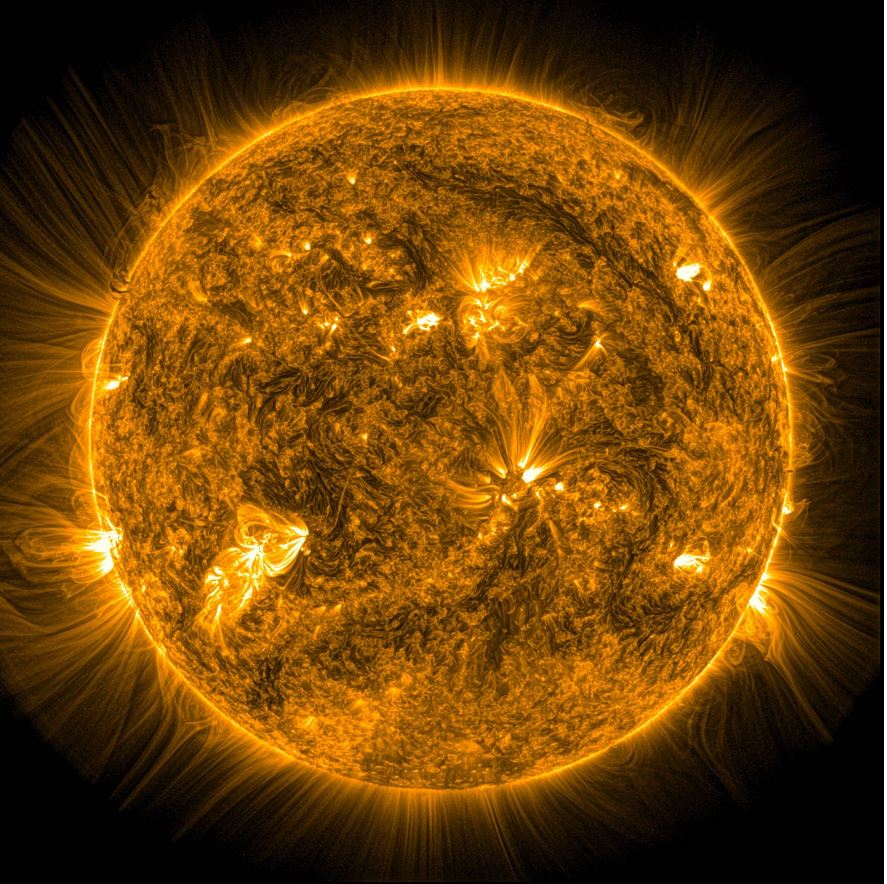A team of scholars has found that magnetic waves in the Sun’s corona, its outermost layer of atmosphere, react to sound waves escaping from the inside of the Sun.
Alfvénic waves are in plasma and have been found to play a crucial role in transporting energy around the Sun and the solar system. They were previously thought to originate at the Sun’s surface, where boiling hydrogen reaches temperatures of 6,000 degrees and churns the Sun’s magnetic field. However, researchers have found evidence that the magnetic waves also react – or are excited – higher in the atmosphere by sound waves leaking out from the inside of the Sun and the sound waves leave a distinctive marker on the magnetic waves.
The presence of this marker means that the Sun’s entire corona is shaking in a collective manner in response to the sound waves. This is causing it to vibrate over a very clear range of frequencies.

A fundamental constant?
The authors say that because this marker is found throughout the corona and was consistently present over the 10-year time-span examined, it could be a fundamental constant of the Sun – and could potentially be a fundamental constant of other stars.
Alfvénic waves are responsible for heating and accelerating powerful solar wind from the Sun which travels through the solar system at speeds of around a million miles per hour. The winds affect the atmosphere of stars and planets, impacting magnetic fields and causing phenomena such as aurora.
"Our evidence shows that the Sun’s internal acoustic oscillations play a significant role in exciting the magnetic Alfvénic waves. This can give the waves different properties and suggests that they are more susceptible to an instability, which could lead to hotter and faster solar winds,” says Dr Richard Morton, lead author of the report and a senior lecturer at Northumbria University.
The SDO data are available from the Joint Science Operations Center (http://jsoc.stanford.edu). The CoMP data are available from the High Altitude Observatory data repository (https://www2.hao.ucar.edu/mlso/mlso-home-page).
Citation: R. J. Morton, M. J. Weberg, J. A. McLaughlin, A basal contribution from p-modes to the Alfvénic wave flux in the Sun’s corona, Nature Astronomy 28 January 2019


